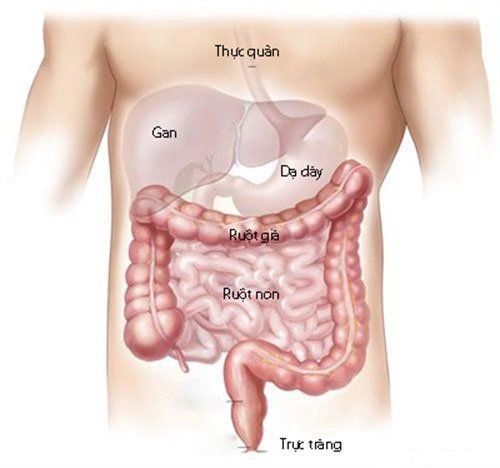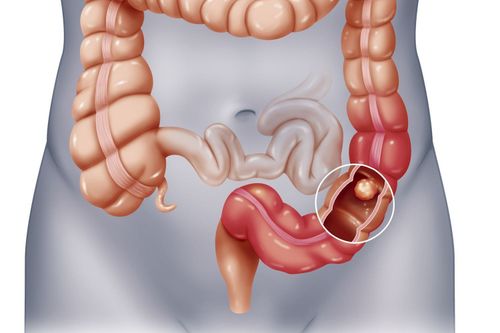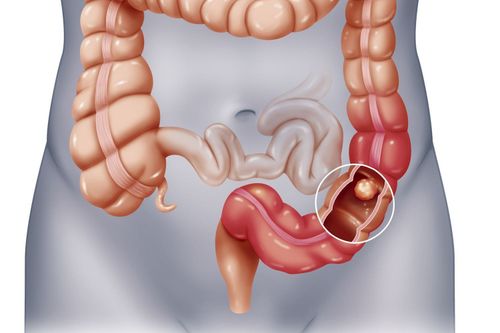This is an automatically translated article.
This article is professionally consulted by resident Doctor Le Thanh Tuan - Department of General Surgery - Vinmec Nha Trang International Hospital. The doctor has extensive experience in examination, treatment and surgery of abdominal diseases.Neonatal intestinal obstruction is the most common surgical emergency in neonates. The disease is caused by many causes, in which meconium intestinal obstruction is a common cause, the disease, if not diagnosed and treated promptly, can lead to death due to intestinal necrosis.
1. What is Meconium Bowel Obstruction?
Meconium obstruction is a condition in which the meconium is abnormally thick and adheres to the mucosa of the entire terminal ileum, causing complete obstruction of the small intestine. Macroscopic morphology of the entire ileum atrophied in the lumen filled with meconium aggregates, the ileum above the obstructed segment dilated in the lumen filled with liquid meconium.The condition of meconium adhesion is due to the appearance of abnormal mucus, in addition to the intestines, this mucus also appears in many other exocrine glands such as pancreas, liver, lungs, intestines, sweat glands, salivary glands, gonads, nasal mucosa. However, the organs most affected are the pancreas and intestines, so meconium ileus may be an early sign of systemic cystic fibrosis.
Meconium bowel obstruction may not have complications if it is detected early and treated promptly. But if detected late, there may be complications such as intestinal perforation, intestinal volvulus, causing intestinal necrosis; if complications during pregnancy cause intestinal atrophy, meconium peritonitis. These dangerous complications can increase the risk of infant death. Therefore, when seeing suspicious signs, it is necessary to seek medical attention for timely treatment and monitoring.
Symptoms of the disease such as:
Do not pass meconium: Normally, babies will pass meconium after birth about 6 to 8 hours, with the nature of black and sticky plastic. Profuse vomiting: This is an early sign of illness, usually occurring in the first hours after birth. Vomiting is often mixed with yellow or green bile, sometimes even intestinal juices are vomited. Abdominal distention: The child's abdomen is larger than normal, and loops of bowel can be seen floating on the abdominal wall. However, this is a late sign, depending on the location of the blockage, if the blockage is high in the gastrointestinal tract, the abdomen is usually not distended, but sometimes it collapses. Some children find it unusual to have an anus or see that the anal opening is blocked. If these signs are found, they need to be examined immediately to be monitored and conduct some more paraclinical tests for early diagnosis. Many cases of babies diagnosed before birth by fetal ultrasound in the second and third months of pregnancy show dilated or brightened bowel loops.

2. Laparoscopic surgery for the treatment of meconium intestinal obstruction in infants
As a surgical emergency that needs to be treated early, if the disease is detected early without complications, conservative treatment is indicated by enema and monitoring for 6-12 hours. surgical method.Surgical treatment is indicated when the bowel obstruction in the neonate comes late, and conservative treatment fails. End-to-end bowel anastomosis with tampering operation. Bevel the dilated bowel tip so that the remaining diameter of the dilated bowel tip becomes equivalent to the diameter of the small bowel tip, suture the bevel, and end-to-end anastomosis. This method of intestinal anastomosis has overcome the disadvantages that other methods of intestinal anastomosis in neonatal intestinal obstruction have had, so it is now almost the surgery used by pediatric surgeons in intestinal anastomosis. of neonatal intestinal obstruction. Disadvantage: because the surgery uses many intestinal sutures, there is an increased risk of leakage at the location of these sutures. This method of beveling intestines has been called by some authors as the "pencil sharpening" method of intestinal anastomosis. Compared with open surgery, laparoscopic surgery for intestinal obstruction in infants has many advantages such as:
Laparoscopic surgery is less invasive due to small cuts in the abdomen. Both external and internal scars are smaller than with open surgery. This method is less painful, the child does not have to suffer much pain. The length of hospital stay is shorter, due to the shorter hospital stay, so the cost of treatment is also significantly reduced. Because it is less invasive, the cuts are small, so the recovery time is faster. Notes after surgery:
After surgery, the child is used to monitor vital signs, use antibiotics, rehydration and electrolytes intravenously. Monitor postoperative complications. Laparoscopic surgery in the treatment of meconium intestinal obstruction in children has many outstanding advantages compared to traditional surgery, the health of the newborn is still weak, so laparoscopic surgery is less invasive and faster to recover. .

When a child shows signs of meconium bowel obstruction, parents can take the child to Vinmec International General Hospital for examination, diagnosis and treatment. Here, there is a team of well-trained pediatric specialists with high technical qualifications, rich experience in the treatment of diseases of infants, children and children under 16 years old. Vinmec is equipped with a system of modern and advanced medical supplies and professional service quality that will support high efficiency in diagnosis and treatment of patients.
Please dial HOTLINE for more information or register for an appointment HERE. Download MyVinmec app to make appointments faster and to manage your bookings easily.














